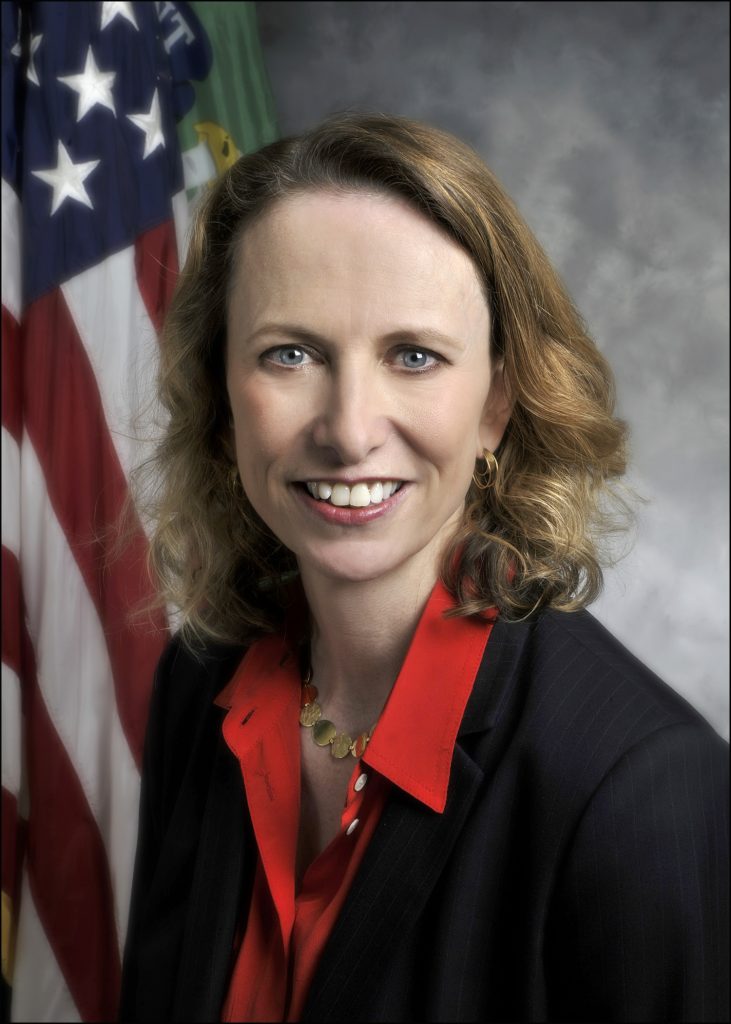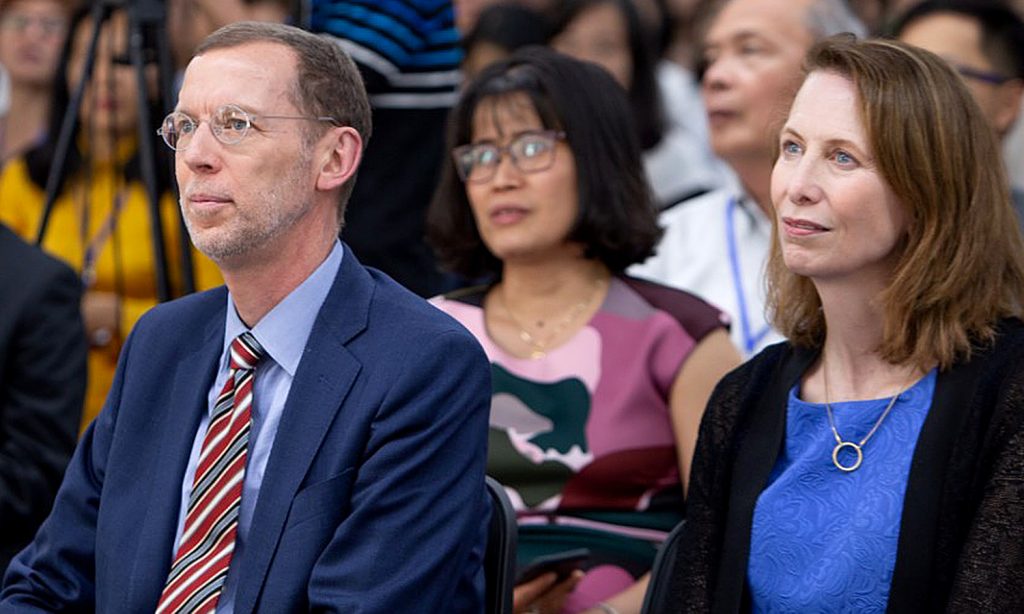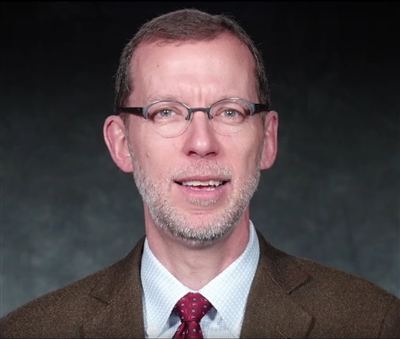During her talk at Fulbright University Vietnam, former Assistant Secretary of the Treasury for Economic Policy and Chief Economist of the United States Department of the Treasury, Harvard Professor Karen Dynan forecasted that countries which took swift actions to control the spread of Covid-19 early such as Vietnam could emerge out of this financial crisis as winners.
Dr. Vu Thanh Tu Anh, Dean of the Fulbright School of Public Policy and Management (FSPPM), also shared the same viewpoint. In the talk, Dr. Tu Anh emphasized that “the way countries responded to the current crisis would determine how they could recover in the medium-term.” If the Covid-19 pandemic prolonged until a much-anticipated vaccine is found, “countries, which got off [the pandemic] relatively safe, would have a more promising start to protect the businesses and households, and resume business activities as normal,” stressed the Dean of FSPPM.
Two top economists from Harvard University and Fulbright University Vietnam had an interesting discussion on the prospects of the world economy. Through the talk, the experts pointed out some suggestions which countries could follow to efficiently respond to such an unprecedented crisis.

Professor Karen Dynan
How can we escape from this “large hole” of a financial crisis?
According to Professor Dynan, when addressing the issue of world economy, everyone can easily answer the question of how large of a “hole” the world is sinking into. It’s fairly obvious to see that while shutdowns and other social distancing measures are effective for containing the spread of the virus, they are causing grave challenges for the economies of the world. The data of Q1 shows this downward trend quite clearly. The GDP of the world’s largest economy plunged 4% in Q1. That was the biggest decline since the financial crisis in 2008. For the first quarter, consumer spending in the U.S. fell sharply in March, especially in categories that involves getting close to other people. After 10 years of strong economic growth, America is facing a drastic rise in unemployment rate with 38.6 million people filed for unemployment as of May 22, 2020.
However, the more challenging issues are how long it will take for the world to get out of this “large hole” and how it can successfully recover. In other words, will the world economy face a V-shaped recession, which we go into it and get out of it quickly; a U-shaped recession, which takes us longer to recover; or an L-shaped recession, which we may not get out of at all? Our two experts admitted that there are too many uncertainties to accurately forecast how the world economy can recover post Covid-19 pandemic. To recover, each country has to succeed on both fronts: control the spread of the disease and overcome the economic aftermaths.
Professor Dynan emphasized that the structural damage a country faces throughout this current crisis would determine how quickly such country can recover afterwards. When an economy shuts down, it will have to face a “structural damage,” meaning all business activities become disrupted, or fractured. For example, restaurants have to close because they cannot afford their rents, and after a while, cannot reopen their business; or a family loses their home because without a job, they cannot pay their mortgage. “The idea is to prevent widescale bankruptcies among households and businesses because that is the type of structural damage that could really hold back the economic recovery,” Professor Dynan suggested. She also recommended governments to directly offer financial support to businesses to help them pay their employees, as well as to households to help them pay for the necessities.

Prof. Dynan and her husband, Prof. Doug Elmendolf during their visit to Fulbright University Vietnam, January 2020.
Even though the world economy looks rather grim, Professor Dynan still held a more positive outlook for the future. First, the world economy at the start of the year 2020 was rather healthy. This stands as stark contrast to the financial crisis in 2008-2009, which happened because of the structural imbalances of the economies. Thus, if we can contain both the spread of the virus and the deadliness of SARS-COV2, the economy can quickly return to normal because there will be fewer structural imbalances to correct.
Moreover, unlike the 2008 financial crisis, this time, there is still ample room for central banks to apply appropriate fiscal policies and monetary policies to lessen the damage, and help governments better manage the crisis. Professor Dynan commented that since the start of the pandemic, central banks have been promulgating such efficient monetary policy. For example, in America, central banks swiftly acted as the lenders of last resorts, providing liquidity to struggling companies at a low interest rate. This action not only helps companies from going bankrupt but also prevents the economy from a more damaging financial crisis.
Who to save first: Big corporations or hardest-hit ones?
According to Professor Dynan, there is also ample room for governments to use fiscal policies to avoid a worse financial crisis. During the 2008 crisis, standard fiscal policies were also applied to cut tax, raise public spending, and in turn, raise production an employment. However, during this Covid-19 crisis, governments are using a different type of fiscal stimulus to prevent the aforementioned structural damage. For example, the American government targeted an aid of $600/week to people who had lost their job due to Covid-19. The French government offered direct aid to companies to keep people employed. Vietnamese government also provided direct support to those whose jobs had been affected by the virus, even though the level of support was still modest compared to their actual earnings.
Some Vietnamese economists suggested that with limited resources, governments should focus on saving big corporations. Professor Dynan, however, believed that “governments should continue supporting businesses or individuals who are on the verge of bankruptcy.” Such fiscal stimulus will help prevent structural damages, keep countries in a better position to economically recover, and mitigate the impoverishment risk in the lower class.
Also shared this viewpoint, Dr. Vu Thanh Tu Anh believed that “while fiscal policies and monetary policies focus on the imminent crisis, we should not overlook the structural imbalances which are crucial to the economic growth in the future.”
According to both experts, one of the structural imbalances that most countries, Vietnam included, is facing is the growing inequality between the rich and the poor. Unfortunately, the Covid-19 pandemic actually worsened inequality. In America, most of the 38.6 million unemployed people are service workers, earning minimum wage. In Vietnam, according to Dr. Vu Thanh Tu Anh, approximately 5 million business households, which comprise of 20 million affected individuals, are taking the hardest hit and have no capability to get back on their feet. Therefore, to avoid social unrest, fiscal stimulus must be directed to this vulnerable group, not because it is an economic issue, but because it is also a social security issue.
“Deciding who will receive aid and under which requirements can shape or distort the economy in many years to come,” Dr. Vu Thanh Tu Anh warned. He added that policies should be designed to minimize exploitation. For example, governments need to ensure that aid must be delivered to small businesses and households that need it, not to big corporations with abundant resource.

Dr. Vu Thanh Tu Anh
“When the pandemic is behind us, governments have to find the solution for the growing inequality gap. Else, it will foster the rise of populism and support for populist policies. Those are the challenges we have to solve in the near future,” Professor Dynan reiterated.
We should not worry about public debt yet
In just the past few weeks, the world witnessed a spike in government spending to respond to Covid-19. This stokes concern over an uncontrolled public debt. However, Professor Dynan shared that “now is not yet the time for us to worry about high public debt, at least for America, even though America’s ratio of federal debt to GDP is expected to exceed 100%, the highest since World War II.” The reason, she explained, is that the American government can still borrow at very low rates, below 1%. This shows that there is a great willingness among investors to finance the government’s spending.
“The moment we need to worry about public debt is when interest rate starts to soar,” Professor Dynan added.
However, the experienced economist admitted that this scenario is not true for all emerging market and developing economies. These low-income countries may have to face worsened outbreaks because of weak healthcare systems. They may not even have the choice to apply appropriate measures to prevent a long-term recession. With limited resource, they may have to borrow at a higher interest rate, which will set them up for a future sovereign debt crisis. Professor Dynan emphasized that rich countries must play their role in this global crisis. Organizations like the IMF and the G20 should have a more serious conversation about the right response, which involves debt standstills and eventually debt forgiveness for countries that cannot get out of this crisis without proper support.
Truong Minh
Related Articles

Public Lecture at Fulbright by Dean of Harvard Kennedy School

25 Years of Cooperation between Fulbright and Harvard: The Journey from the Shoulders of a Giant

